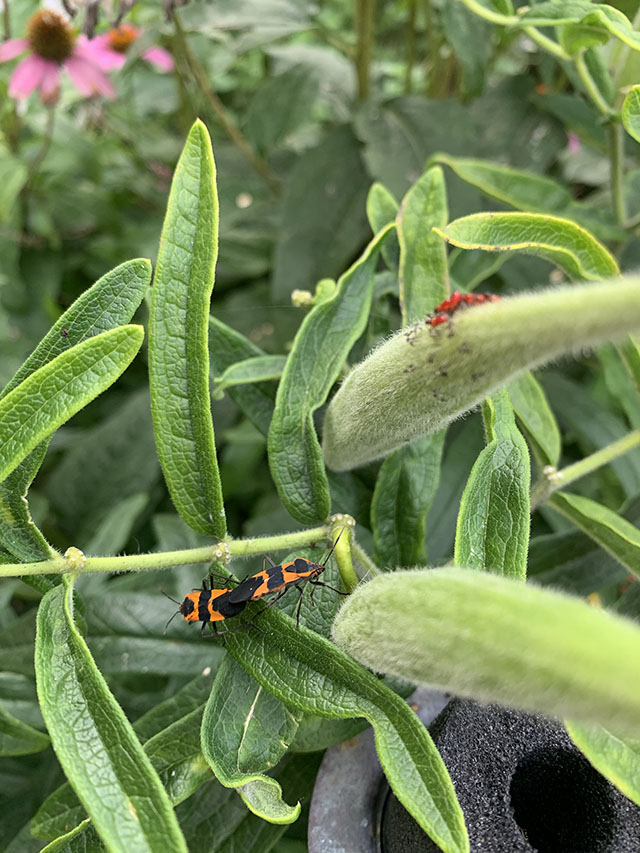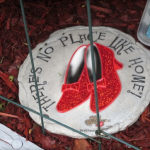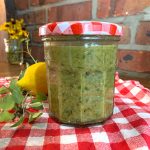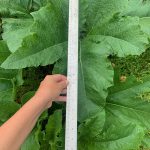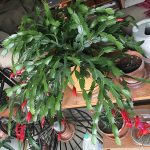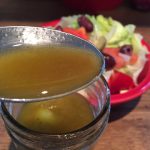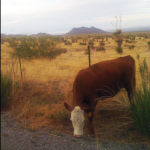Milkweed Bugs… Caught In The Act!
I was gardening the other day and spotted a bug I’ve never seen before. It had bright red-orange markings contrasting the insects long black, flat body. It was on a milkweed plant. I took a closer look and noticed there were two bugs actually, connected back to back. Also on a seed pod, I saw about 12 little red dots which reminded me of aphids. Those concerned me. I thought this was a late season pest infestation.
I immediately took out my phone and typed in a quick description. The critter in question is sensibly named the milkweed bug (Oncopeltus fasciatus). They are true bugs (hemipteran) of the family Lygaeidae. There are two types – small (¾ inch long) and large (½ inch long). This family of insects is commonly referred to as seed bugs because they use their long proboscis to puncture seed pods for nutrients. Milkweed bugs are found in Southern Canada, North American and live as south as Costa Rica.
From observation I thought the couple might be mating and in fact I was right! How exciting it was to witness this moment in my garden. I thought, “Wow, this is nature in action!” The red “dots” were nymphs in the second stage of development. They appear yellow in the first stage. The incubation period is about 4-5 days. There are five stages of metamorphosis. Each adult only lives for one month. They will overwinter in your fall garden debris.
I was relieved to learn that milkweed bugs are not harmful to milkweed plants or gardens. In the short time they live, their presence does very little damage to the plants they inhabit.
As monarch season approaches, my next thought was, “Are milkweed bugs harmful to monarchs?” Monarchs lay their eggs on milkweed exclusively, therefore the plant is essential to their survival. Can both of these insects share the same nursery? The answer is yes! While small milkweed bugs occasionally can be scavengers, they don’t pose a direct threat to monarch pupae. These two insects and others have co-existed on milkweed, relying on the plant as food for thousands of years.
This is very interesting. Both the monarch and milkweed bug have a unique feature. They have evolved a tolerance to the poisonous sap produced in milkweed. Notice both the monarch and the milkweed bug have similar coloring and markings. That color is a result of the toxic sap they ingest from the milkweed. Both insects use the stored poison from the milkweed plant as a defense mechanism. The bold orange color signals too predators, “Stay away, I am poisonous!”
Since milkweed bugs pose no harm, let nature take its beautiful course. Do not disturb the milkweed bug by using insecticides or other pest control measures. Those chemicals will also harm monarch larvae and other insects. The presence of milkweed bugs are important to the ecosystem – nature knows what it’s doing!
For more on gardening, me for the day-to-day in the garden on instagram – @theglorifiedtomato.
